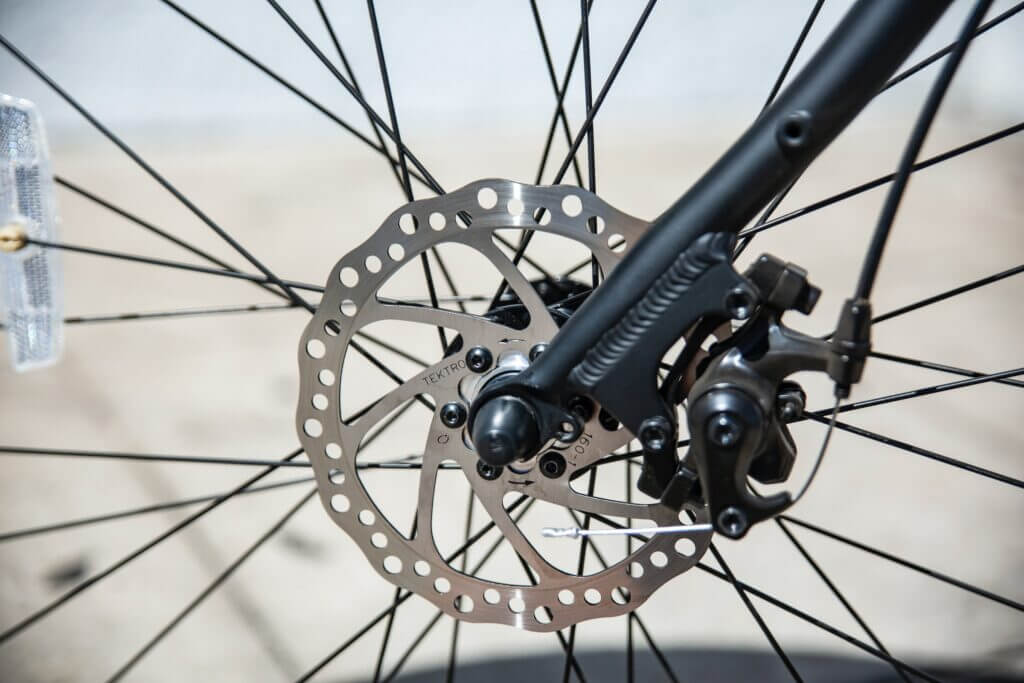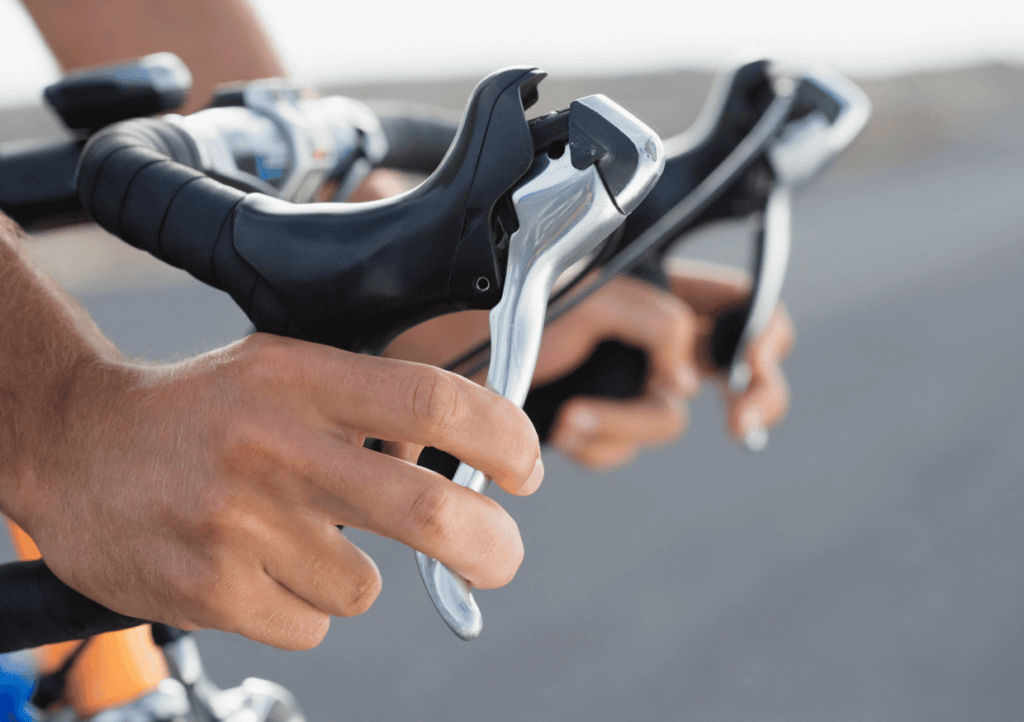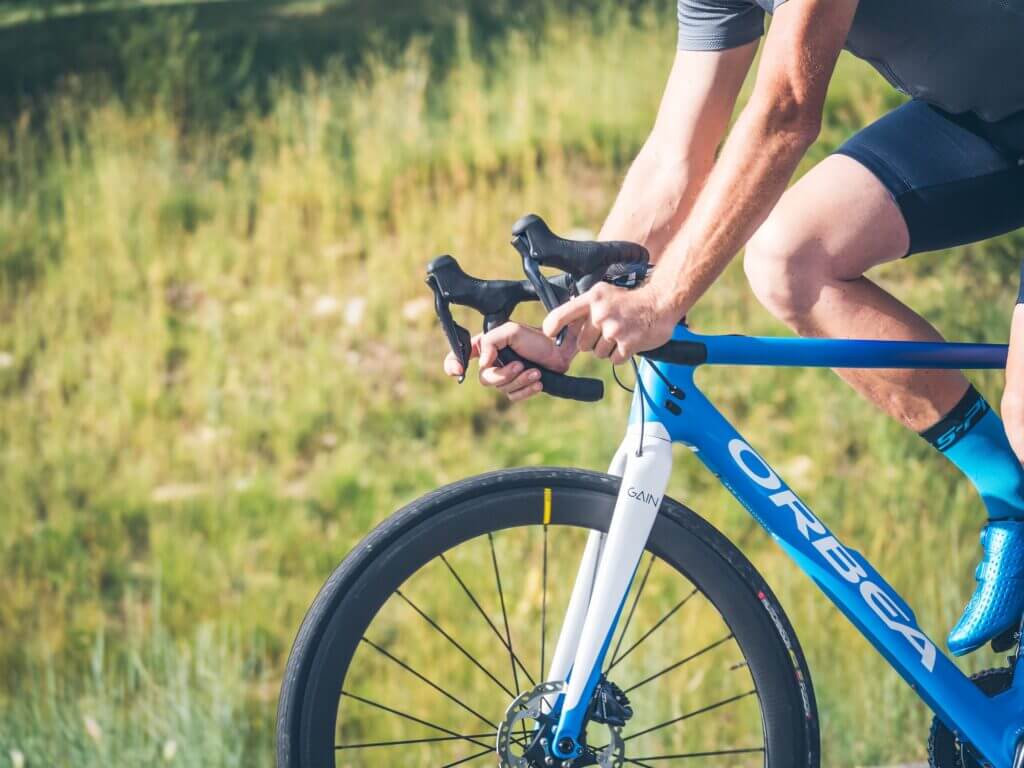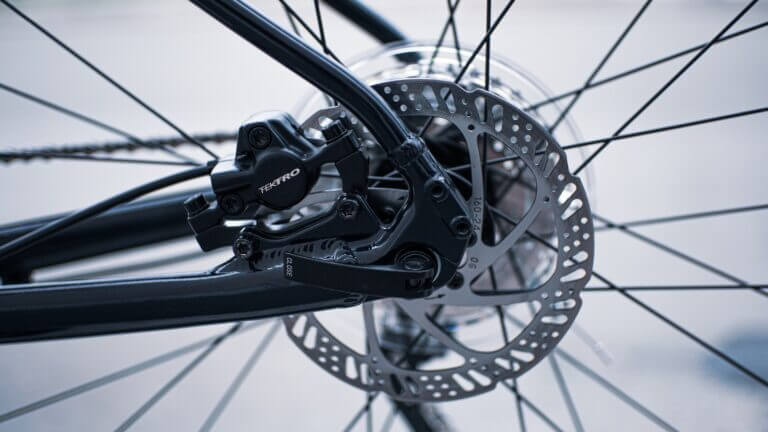When it comes to road cycling, safety and performance are paramount. Among the many components that contribute to a cyclist’s overall experience, brakes play a critical role.
The ability to slow down or come to a complete stop quickly and reliably is not only essential for avoiding accidents but also for confidently navigating challenging terrains.
With the ongoing debate between disc brakes and rim brakes, riders find themselves facing a choice that can significantly impact their riding experience.
In this comprehensive article, we will delve into the advantages and disadvantages of both types of brakes, empowering you to make an informed decision about which one best suits your unique road cycling needs.
Understanding Disc Brakes
Disc brakes have rapidly gained popularity in recent years, transforming the way cyclists approach braking performance. Comprising three primary components – rotors, calipers, and pads – disc brakes offer an array of advantages that significantly elevate your cycling experience.
One of the standout benefits of disc brakes lies in their unparalleled performance in adverse conditions, such as wet or muddy terrain. Unlike rim brakes, which rely on the rim’s surface for stopping power, disc brakes operate independently from the wheel.
This crucial distinction prevents the accumulation of mud, water, or debris on the braking surface, ensuring consistent and reliable stopping power regardless of the weather.
Whether you’re navigating a rain-soaked road, traversing a gritty gravel path, or maneuvering a muddy trail, disc brakes provide unwavering confidence in your ability to brake effectively.
Types of Disc Brakes
Within the world of disc brakes, two main categories exist: mechanical disc brakes and hydraulic disc brakes.
Mechanical Disc Brakes: These brakes utilize a cable system to transmit force from the brake lever to the caliper, initiating the braking action. Mechanical disc brakes are notably simpler to install and maintain compared to their hydraulic counterparts.
The cable actuation eliminates the need for hydraulic fluid and associated bleeding procedures. This design makes mechanical disc brakes a preferred choice for riders who value ease of maintenance and straightforward adjustment.

Hydraulic Disc Brakes: Hydraulic disc brakes, on the other hand, employ a hydraulic fluid system to translate the force applied to the brake lever into precise and modulated braking power.
This results in a smoother and more controlled braking experience, particularly beneficial when navigating challenging terrains like steep descents or tight corners. Hydraulic disc brakes excel in delivering consistent braking power regardless of how much pressure you apply to the lever.
The fluid dynamics allow for immediate response and modulation, enhancing your control over the bike’s speed. Additionally, hydraulic disc brakes tend to require less effort to achieve the same level of braking force, reducing hand fatigue on long rides.

Ultimately, the choice between mechanical and hydraulic disc brakes hinges on your personal preferences and priorities. Mechanical disc brakes are a great option for those who prioritize simplicity and ease of maintenance, while hydraulic disc brakes cater to riders seeking the highest level of braking precision and modulation.
In the dynamic landscape of road cycling, disc brakes have undoubtedly brought a new dimension to braking performance. Their ability to provide reliable and consistent stopping power across various conditions enhances rider safety and confidence, opening up new possibilities for exploration and pushing the boundaries of your cycling adventures.
Analyzing Rim Brakes

Rim brakes, consisting of brake pads and calipers that grip the rim’s sidewalls, have stood as the bedrock of braking systems in road cycling for decades. Their enduring popularity owes much to their simple yet effective design.
One of the primary appeals of rim brakes is their lightweight construction, which aids in minimizing the overall weight of the bike. For riders who prioritize climbing prowess, swift accelerations, and maneuverability, this weight advantage can significantly influence their decision.
Rim brakes’ minimalist design directly contributes to the reduced weight of the bicycle, resulting in a more agile and responsive ride. Whether powering up steep inclines or navigating technical corners, the lighter load offers riders a noticeable edge.
The combination of decreased weight and the responsive feel of rim brakes can translate into enhanced control, especially during challenging uphill segments or sprints.
Challenges in Wet Conditions
However, as with any technology, rim brakes are not without their limitations. One of the prominent drawbacks becomes evident when the weather turns inclement.
Riding in wet conditions poses a particular challenge for rim brakes. When brake pads are exposed to rain or wet road surfaces, the friction between the pads and the rim can be compromised.
This reduced friction diminishes the brakes’ stopping power, potentially leading to longer stopping distances and decreased control. Cyclists need to exercise extra caution when braking in rainy conditions, as the response might not be as immediate as in dry weather.
Heat Buildup and Rim Wear
Another aspect that warrants consideration is the effect of extended braking, such as during prolonged descents. The friction generated between the brake pads and the rim can lead to a buildup of heat.
While modern rim brake designs incorporate features to dissipate heat, prolonged and aggressive braking on steep descents can still cause the rim temperature to rise significantly.
This heat buildup not only affects braking performance but can also have long-term consequences for the rim itself. Excessive heat can potentially cause the rim to deform or wear down prematurely, compromising the structural integrity of the wheel.
Braking Performance: Disc vs. Rim

When it comes to braking performance, both disc brakes and rim brakes have their strengths. Disc brakes, with their larger rotors and advanced caliper designs, offer exceptional stopping power and modulation.
This means you can precisely control your speed, even in challenging situations such as sudden obstacles or steep descents. The superior mechanical advantage provided by disc brakes allows you to maintain control and navigate tricky terrain with confidence.
Moreover, the consistent performance of disc brakes on various terrains ensures your safety and confidence while riding. Whether you’re cruising on smooth asphalt, tackling rough gravel paths, or descending treacherous mountain roads, disc brakes consistently deliver reliable stopping power. This predictability is especially valuable when facing unpredictable weather or unfamiliar routes.
On the other hand, rim brakes, although not as powerful as disc brakes, still provide adequate stopping power for most road cycling scenarios. The tactile feedback they offer can be advantageous for riders who prefer a more intuitive braking experience.
You can feel the modulation as the brake pads grip the rim, allowing you to gauge the right amount of pressure required for a controlled stop.
While disc brakes shine in wet conditions, rim brakes can be just as effective on dry roads. On a clear day, when the roads are dry and traction is optimal, rim brakes can perform exceptionally well.
They provide strong and reliable braking performance, giving you the confidence to navigate turns and intersections smoothly.
In conclusion, both disc brakes and rim brakes offer distinct advantages in terms of braking performance. Disc brakes excel in their raw stopping power and consistent performance across various terrains and weather conditions.
Rim brakes, though not as powerful, provide reliable stopping power and offer an intuitive tactile feedback that some riders prefer. The choice between the two depends on your personal preferences, riding style, and the type of terrain you frequently encounter.
Weight and Aesthetics

One key consideration for road cyclists is the weight of their equipment. Disc brakes, with their additional components, tend to be slightly heavier than rim brakes.
On average, a set of disc brakes can add around 200 to 300 grams to the overall weight of the bike. This weight difference, while marginal, can impact climbing and acceleration, especially for competitive riders who seek every possible advantage in their quest for peak performance.
While the added weight of disc brakes might not be a major concern for recreational cyclists, those focused on speed and efficiency may find themselves deliberating over the trade-off between enhanced braking power and the slight increase in overall weight.
Another aspect to consider is aesthetics. Rim brakes have a classic, streamlined look that some cyclists prefer for its timeless appeal. The exposed brake calipers and the visible engagement with the rim provide a traditional cycling aesthetic that resonates with riders who appreciate the sport’s rich history.
On the other hand, disc brakes offer a modern appearance that aligns with the evolving trends in cycling technology. The sleek lines, hidden components, and futuristic feel of disc brakes can be visually striking and appealing to cyclists seeking a contemporary edge.
Ultimately, the choice between weight and aesthetics comes down to personal preference and the specific goals of each rider. Whether you prioritize the sleek elegance of rim brakes or the cutting-edge design of disc brakes, both options have their unique merits that can contribute to your overall road cycling experience.
Maintenance and Durability

Maintenance is a crucial factor to consider when choosing brakes for your road bike. Disc brakes require periodic adjustments and pad replacements, but their design reduces the risk of rim wear. However, disc brake systems can be more complex, requiring more intricate maintenance tasks.
Rim brakes, in contrast, are relatively simple to maintain. Adjusting brake pads and calipers is straightforward, making it accessible to riders without extensive technical knowledge.
This simplicity often allows riders to perform basic maintenance themselves, reducing the need for frequent trips to the bike shop. On the downside, rim brakes expose the rim to wear and tear over time, which can lead to the need for rim replacements.
Proper maintenance not only extends the lifespan of your braking system but also ensures your safety on the road. Regular checks, adjustments, and replacements as needed will contribute to a smooth and worry-free cycling experience, regardless of whether you choose disc brakes or rim brakes.
Cost Considerations
Cost is often a significant consideration for cyclists, influencing both the initial investment and long-term maintenance expenses. Disc brakes tend to have a higher initial purchase cost due to their complexity, involving components like rotors, calipers, and hydraulic systems.
However, when factoring in maintenance expenses over time, the overall cost comparison between disc brakes and rim brakes becomes more nuanced.
Rim brakes generally have lower maintenance costs since they involve simpler mechanisms and fewer components. Brake pad replacements and adjustments are straightforward tasks that can be performed without specialized tools.
However, the cost advantage of rim brakes might be countered by the need for more frequent rim replacements, especially for riders who frequently tackle challenging terrains or ride in adverse weather conditions.
For those already using rim brakes, switching to disc brakes could involve additional expenses beyond the brake components themselves.
Upgrading to disc brakes might necessitate new wheels compatible with disc rotors, brake calipers, and even modifications to the frame or fork. These additional costs need to be factored into the decision-making process.
When considering whether to opt for disc brakes or stick with rim brakes, it’s essential to evaluate not only the upfront costs but also the potential long-term expenses associated with maintenance, replacements, and upgrades.
Your budget and riding style will play a significant role in determining which brake type offers the best value for your individual needs.
Professional Insights

To gather insights from professionals, we spoke with experienced road cyclists and mechanics. The consensus is that both brake types have their merits.
Experienced cyclists who prioritize braking precision and performance often lean toward disc brakes, particularly hydraulic ones. The tactile feedback and fine control offered by hydraulic disc brakes resonate with those who demand the utmost confidence in their braking ability, especially during high-speed descents and tricky corners.
It’s worth noting that in the current professional cycling landscape, a significant number of the top pros use disc brakes for their competitive advantage.
However, cyclists aiming for lightweight setups and simplicity often stick with rim brakes.
Real-world experiences vary. Some riders who switched to disc brakes praised the consistent performance in different weather conditions, while others appreciated the weight reduction and aesthetic appeal of rim brakes.
Cyclists in wet climates laud disc brakes for their reliability on rain-soaked roads and muddy paths, highlighting the safety they provide. Conversely, riders who prioritize an elegant, classic look that complements their bike’s aesthetics often opt for rim brakes.
Ultimately, the best choice depends on your specific preferences and riding style.
Tips for Changing Over to a Bike with Disc Brakes

If you’re considering transitioning from a bike with rim brakes to one equipped with disc brakes, there are a few important factors to keep in mind.
While disc brakes offer numerous benefits, making the switch requires some adjustments to your riding style, maintenance routine, and bike handling.
Here are some tips to help you smoothly transition to a bike with disc brakes:
1. Familiarize Yourself with the New Brake Feel
Disc brakes offer a different braking feel compared to rim brakes. They tend to provide more progressive and powerful stopping power. When you first ride a bike with disc brakes, practice applying gradual pressure on the brake levers to get used to the modulation and responsiveness.
2. Practice Brake Modulation
Disc brakes are known for their excellent modulation, allowing you to finely control your braking power. Spend some time in a safe environment, such as an empty parking lot, practicing different levels of braking force.
This will help you build confidence in your ability to control your speed effectively.
3. Adjust Your Riding Technique
With disc brakes, you’ll discover that you can brake later into corners and have more control on descents. However, this change in braking dynamics might affect your cornering technique.
Practice adjusting your approach to corners and descents to take full advantage of the increased braking power.
4. Be Mindful of Brake Lever Sensitivity
Disc brakes can be more sensitive than rim brakes due to their hydraulic or cable-operated mechanisms. Be cautious in the beginning, as applying too much force too quickly can result in abrupt stops or skidding.
Gradually develop a feel for the brake lever sensitivity to avoid over-braking.
5. Learn Basic Disc Brake Maintenance
While disc brakes can be more complex to maintain than rim brakes, learning some basic maintenance tasks can go a long way in ensuring optimal performance.
Familiarize yourself with tasks like adjusting brake pad clearance, inspecting rotor wear, and cleaning the calipers. Consider seeking guidance from your local bike shop or online resources.
6. Upgrade Your Mechanical Skills
If you’re accustomed to working on rim brakes, transitioning to disc brakes might require developing new mechanical skills. Hydraulic disc brakes, in particular, require specific tools and knowledge for tasks like bleeding the brake lines.
If you plan on performing your own maintenance, invest time in learning these skills.
7. Seek Professional Help
If you’re unsure about making the switch on your own, don’t hesitate to consult a professional bike mechanic. They can help with the initial setup, ensuring that your disc brakes are properly aligned and functioning optimally.
A mechanic can also provide valuable insights on adjusting to the new braking system.
8. Take It Slow
As with any change in cycling equipment, give yourself time to adapt. Start with familiar routes and gradually progress to more challenging terrain as you become more comfortable with your bike’s disc brakes. It’s okay to take it slow, particularly on descents, and build confidence over time.

